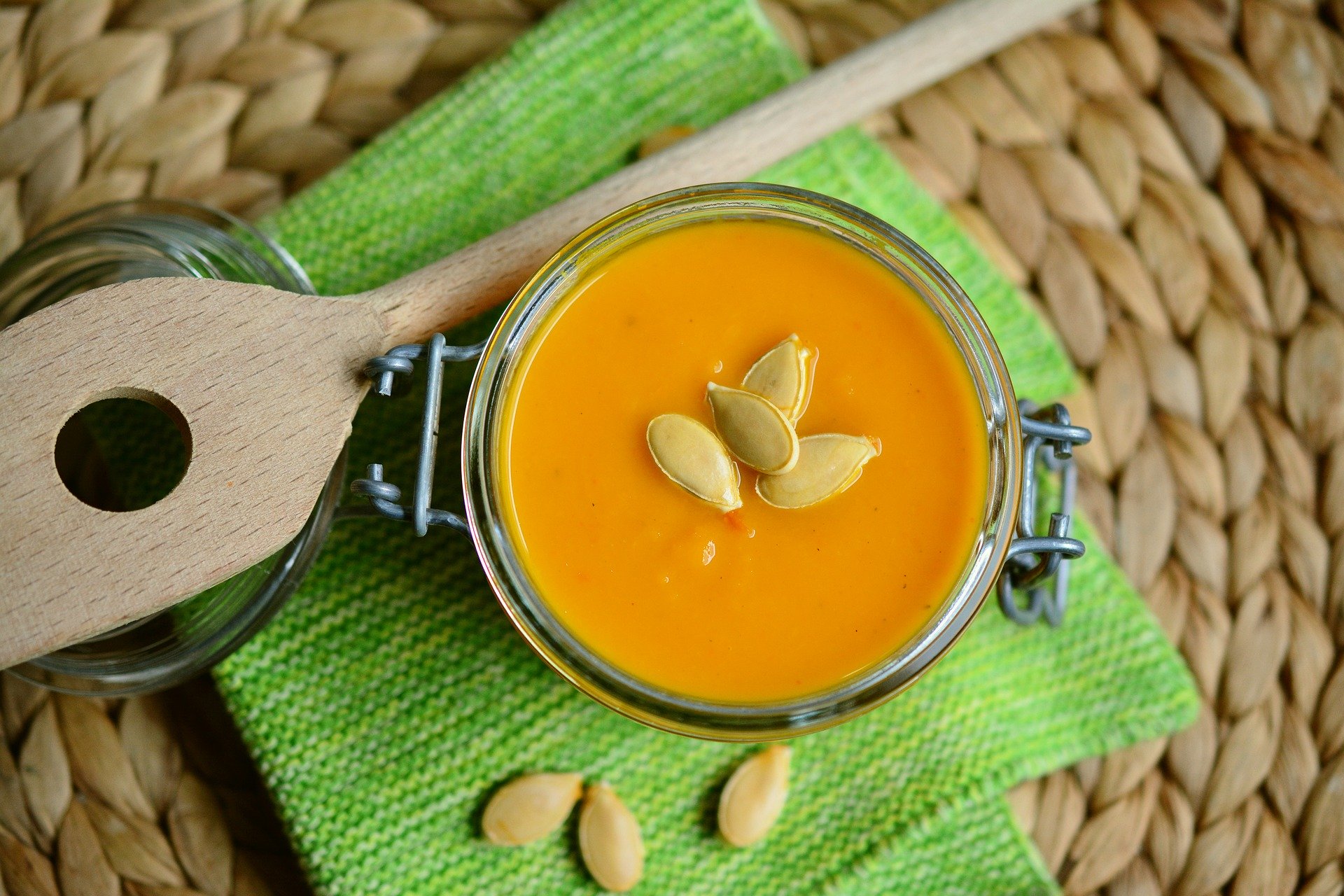
Pumpkin (Cucurbitaceae family)
Plant:
The pumpkin, cousin of the watermelon and melon, belongs to the large family of Cucurbitaceae. There are hundreds of species, of varying sizes – large, small, round, oval, calabash-shaped… – and with distinct shells, smooth or wrinkled, with shades ranging from orange to green. Pumpkin pulp also offers a color that varies from yellow-orange to almost white. It is one of the most popular vegetables in the world, with consumers placing Pumpkins, Provencal Butternut Squash, Siam Squash, or Butternut Squash at the top of their preferences.
Pumpkin can be used for cooking, where the pulp allows a wide variety of sweet or savory recipes, but offers relevant therapeutic properties, and almost the entire plant can be used: flower, leaves, peel, pulp, and seeds.
The cooked pulp helps in case of constipation, hemorrhoids, or arthritis…, rubbing with crushed leaves or the external application of the leaves infusion helps in case of bacterial infection of the skin or to dispel swelling and in otitis situations. The sap of the leaves is used to cancel warts. The freshly crushed leaves help to overcome minor burns or in case of first degree burns, a poultice of raw or cooked pulp can be used.
Pumpkin seeds are also a source of polyunsaturated fats, vitamins, fiber, and protein, which help fight certain diseases and strengthen the functioning of our body.
Properties:
Anti-oxidant, anti-inflammatory, anti-cancer, and diuretic, among others, are some of the properties offered by the pumpkin. This plant still provides few calories (around 10 Kcal per 100g) and is rich in mineral salts (iron, calcium, phosphorus, potassium, magnesium, zinc, and vitamins like A, E, B1, B2, B6, and C.
Benefits:
- stomach pains,
- cardiovascular imbalances,
- dyspepsia,
- degenerative diseases,
- fertility,
- gastritis,
- improves mood,
- intestinal parasites,
- skin,
- arterial pressure,
- constipation,
- prostate,
- reduces fatigue,
- reduces weight,
- immune system,
- nervous system,
- peptic ulcer,
- view…
How to consume:
Almost anything from the pumpkin can be eaten raw – plant leaves, flower, pulp and the seeds themselves —, cooked or in oil.
Pumpkin pulp offers a variety of recipes, making it possible to seduce consumers with soups, salads, main dishes or desserts, and jams, among other delicacies.
The seeds can also be eaten after opening the pumpkin or after being dried as an appetizer.
Contraindication:
For diabetics, people with low gastric acidity, or who suffer from peptic ulcer disease, gastritis, duodenal pathologies, or intestinal colic. It is important to be aware because each body is different and can cause, total or momentary incompatibilities, generated by its ingestion.
This text is an awareness. Depending on the season and the moment in which you are, it is up to each Being to feel whether he should consume this food. The dosage and frequency depend on the nature and physical condition of each Human Being.

Know more about pumpkin at:
Seeds are sources of life, but pay attention to its energy validity




